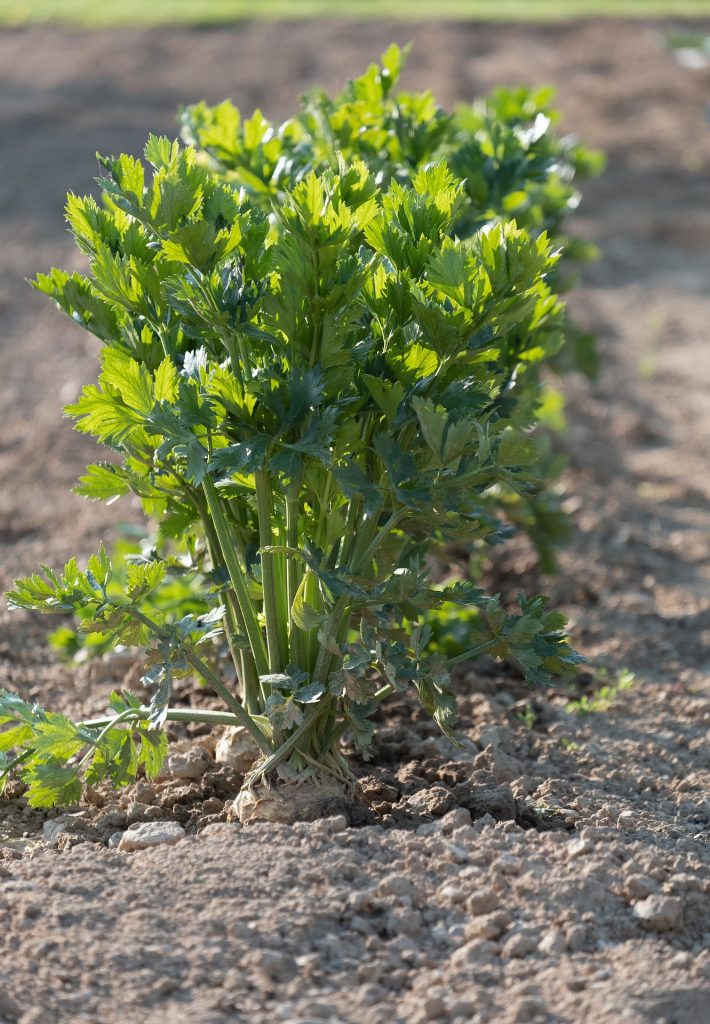Growing Celery
Celery is part of the Apiaceae family, along with celeriac, parsley, parsnip, carrots and fennel.

Site and soil
Celery originally grew in marsh land and has never lost its love for moisture-retaining, fertile soil that is slightly alkaline. It also favours a position in an open, sunny bed and needs regular watering to prevent the stems from becoming tough and stringy.
Planting
Celery prefers moderate conditions, so it’s best to avoid planting in temperature extremes. In our region, the best time to plant is thought to be either in late summer-early autumn or late winter-early spring. I grow mine in autumn because I mostly use celery in soup and stock and I think the flavour is more intense once the frosts arrive.
It’s far easier to use seedlings, but if you have a lot of time, patience and water, try growing from seed. Soak seeds before sowing and press them into seed-raising mixture rather than covering them. They will take 14-21 days to germinate and will need to be kept moist. Once they produce a pair of leaves, they can be pricked out into small pots and grown for a further 6 weeks until they’re ready to be planted in the garden.
Adequate spacing between plants will allow good air circulation to keep the crop healthy. Suggested spacing is 20-30cm between plants and 60-80cm between rows. Many books suggest planting in grids rather than in a long row to provide protection against the wind.
Growing
To blanch or not to blanch? Blanching produces sweeter, pale stalks. If, like me, you tend to use the leaves and stalks for cooking, blanching probably isn’t necessary.
To blanch, wait until the plants are a decent height (at least two months after planting), then gather the stalks in a bunch and tie loosely. Wrap each plant in thick paper, cardboard or a milk carton with the bottom cut out. Hill surrounding soil around the plant to exclude light.
Continue to water regularly. After 3-4 weeks, the stalks should be pale and ready to harvest.

Harvesting
You can either carefully lift the whole plant using a fork, or harvest single stalks and leaves from the outside as you need them. The plant should be ready to harvest about 4 months after planting.
Problems
Snails and slugs need to be kept under control, especially if blanching. Don’t grow carrots and celery near each other as carrot flies will attack celery roots.
A good growing environment is the best way to control many pests. If you notice problems, such as leaf-spotting fungi or leaf miners, remove affected leaves (or whole plants if necessary).
